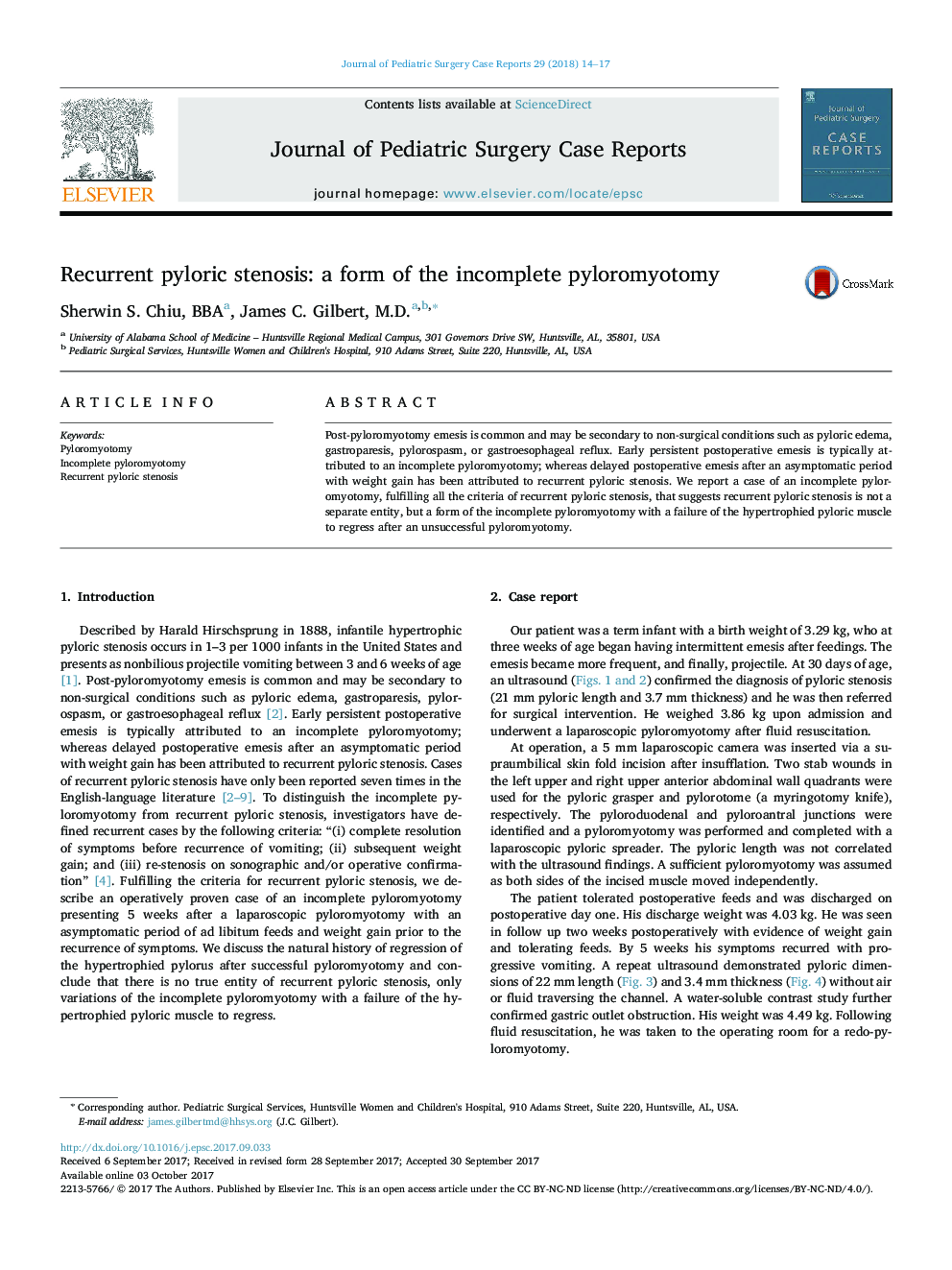| Article ID | Journal | Published Year | Pages | File Type |
|---|---|---|---|---|
| 8811050 | Journal of Pediatric Surgery Case Reports | 2018 | 4 Pages |
Abstract
Post-pyloromyotomy emesis is common and may be secondary to non-surgical conditions such as pyloric edema, gastroparesis, pylorospasm, or gastroesophageal reflux. Early persistent postoperative emesis is typically attributed to an incomplete pyloromyotomy; whereas delayed postoperative emesis after an asymptomatic period with weight gain has been attributed to recurrent pyloric stenosis. We report a case of an incomplete pyloromyotomy, fulfilling all the criteria of recurrent pyloric stenosis, that suggests recurrent pyloric stenosis is not a separate entity, but a form of the incomplete pyloromyotomy with a failure of the hypertrophied pyloric muscle to regress after an unsuccessful pyloromyotomy.
Keywords
Related Topics
Health Sciences
Medicine and Dentistry
Perinatology, Pediatrics and Child Health
Authors
Sherwin S. BBA, James C. M.D.,
